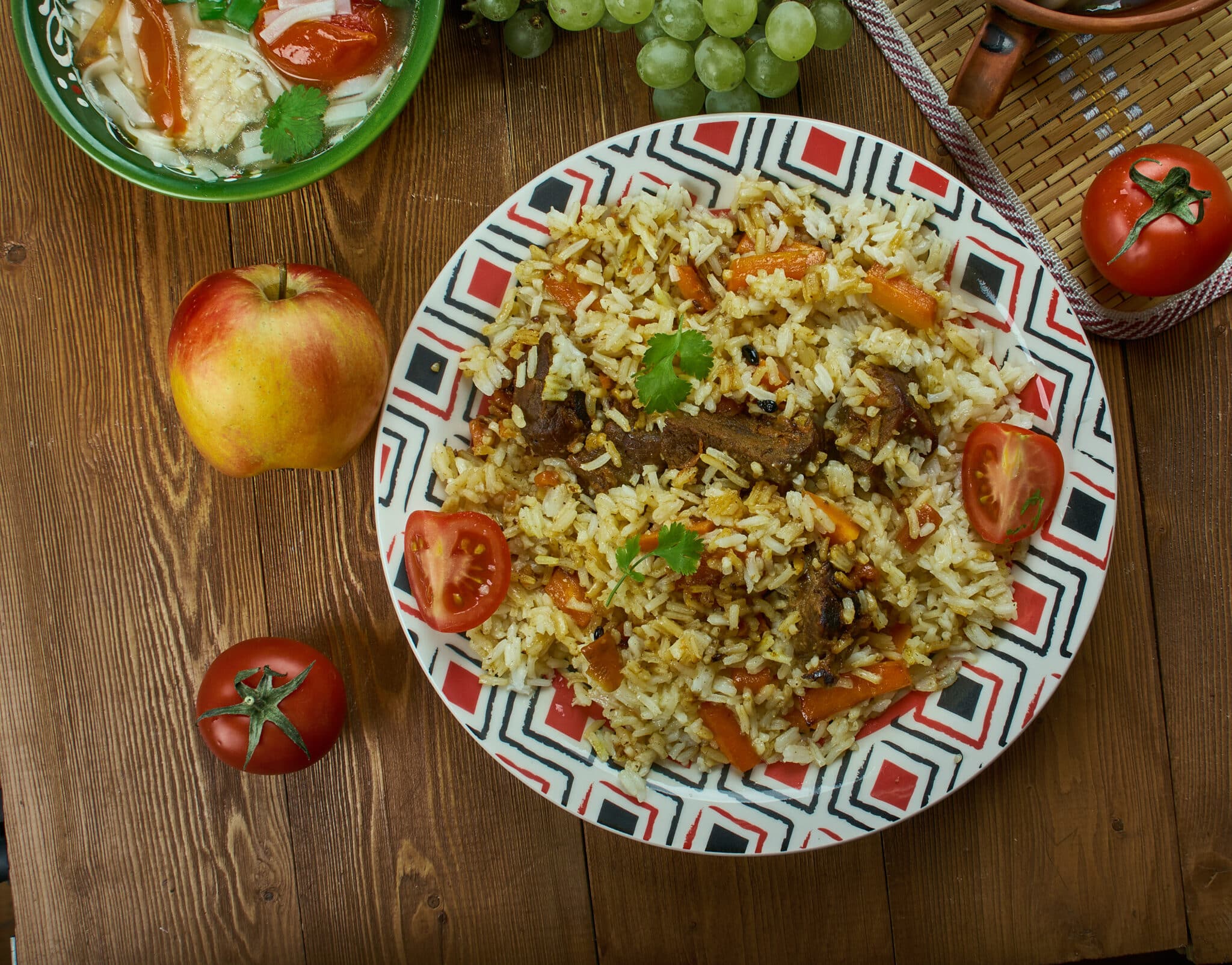
Palaw, a beloved dish in Turkmenistan, is a culinary treasure that has delighted taste buds for centuries. Families and friends frequently relish this hearty meal, which intricately weaves into the fabric of Turkmen culture and tradition.
The origins of palaw trace back to ancient times, believed to have emerged from the nomadic tribes of Central Asia. Over time, it evolved into an essential cuisine for the people of Turkmenistan and the broader Central Asian region.
Are you eager to delve further into the fascinating history of this dish? Continue reading to uncover all the intriguing details, and if you’re feeling adventurous, you can even learn how to prepare it at home through this guide created by our Remitly team. This guide is a part of our series celebrating the diverse culinary tradition of our global customers.
The History of Palaw
Historically, palaw was a practical dish for nomadic tribes. Its ingredients were readily available and could be cooked over an open fire. As these tribes settled down, they continued to prepare palaw as a reminder of their heritage.
Over the years, this humble dish was adopted all around Central Asia, and every country created their own version of this dish. In Turkmenistan, palaw has become synonymous with hospitality. Serving palaw to guests is considered a sign of respect and warmth. Turkmens don’t cook palaw every day; they save it for special occasions like weddings, birthdays, funerals, and holidays.
Ingredients and Cooking Process
Traditional palaw consists of key ingredients: rice, typically lamb, onions, carrots, and spices like cumin and coriander. These simple elements combine to define the dish’s flavor.
Throughout Turkmenistan, palaw varies. Some regions include dried fruits for sweetness and texture, while others experiment with different meats or spices.
Cooking palaw requires precision. First, meat browns in oil until richly colored. Then, onions sauté to golden, followed by carrots cooked to tenderness. Rice, washed thoroughly, joins the pot with water or broth, simmering until fully cooked. Finally, spices are added to infuse unique flavors.
A Simple Palaw Recipe
Cooking palaw offers a wonderful opportunity to delve into Turkmen culture and relish a delectable meal. Here’s a simple recipe for Turkmen palaw.
Ingredients:
- 2 cups of long-grain rice
- 1 pound of lamb, cut into chunks
- 3 large onions, finely chopped
- 4 carrots, grated
- 4 cups of water or broth
- Salt to taste
- 1 teaspoon of cumin seeds
- Half teaspoon of coriander seeds
Instructions:
- Rinse the rice under cold water until the water runs clear. Set aside.
- Heat oil in a large pot over medium heat. Add the lamb and brown on all sides.
- Remove the meat from the pot and set aside.
- In the same pot, add onions and sauté until golden brown.
- Add grated carrots to the pot and cook until tender.
- Return the meat to the pot along with rinsed rice, water or broth, salt, cumin seeds, and coriander seeds.
- Bring it to boil then reduce heat to low, cover the pot and let it simmer for about 20 minutes or until rice is fully cooked through.
- Serve hot with fresh vegetables or pickles on the side.
How to Serve and Eat Palaw
Palaw is traditionally presented in large communal dishes, and in special occasions, symbolizing unity and collective enjoyment. Family and friends gather around the table, often embracing the tradition of eating with their hands.
It’s common to serve accompaniments such as fresh vegetables or pickles for added crunch and acidity. The combination of flavors—savory rice, tender meat, and sweet carrots—creates a delightful palate experience.
Palaw is not just an everyday food, it is also served on special occasions such as weddings, birthdays and national holidays. It is considered good luck to eat Palaw at the beginning of something new: a trip, a job, or even a year.
More about Food in Turkmenistan
Turkmen cuisine is as diverse as its landscape—ranging from hearty meat dishes like palaw to refreshing salads made with locally grown produce.
Meat Dishes
Meat plays a significant role in Turkmen cuisine due largely to their nomadic heritage and arid climate favoring livestock farming over crop cultivation.
People particularly favor lamb and use it in various dishes, including shashlik (grilled skewered meat) and dograma (a stew made with hand-torn pieces of flatbread, meat, and vegetables).
Dairy Products
Dairy products are also integral to Turkmen cuisine. They consume a variety of fermented milk products like chal—a slightly sour, fizzy drink made from camel milk.
Breads and Pastries
Bread holds a sacred place in Turkmen culture. People often bake corek, a round bread with a decorative pattern on top, for special occasions. Pastries like sheker chorek (sweet bread) and ichlekli (meat-filled pastry) are also popular.
Fruits and Vegetables
Despite the arid climate, fruits and vegetables form an essential part of the Turkmen diet. Melons are particularly cherished—so much so that they even have a holiday dedicated to them.
Whether it’s the hearty palaw or refreshing chal, every bite offers a taste of Turkmenistan’s vibrant culture.
Visit the homepage, download our app, or check out our Help Center to get started.